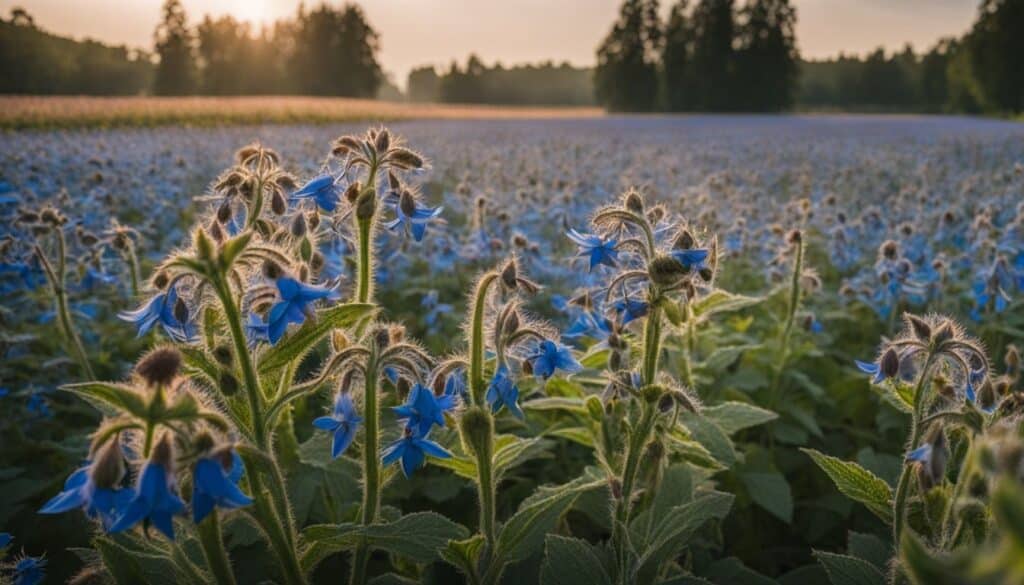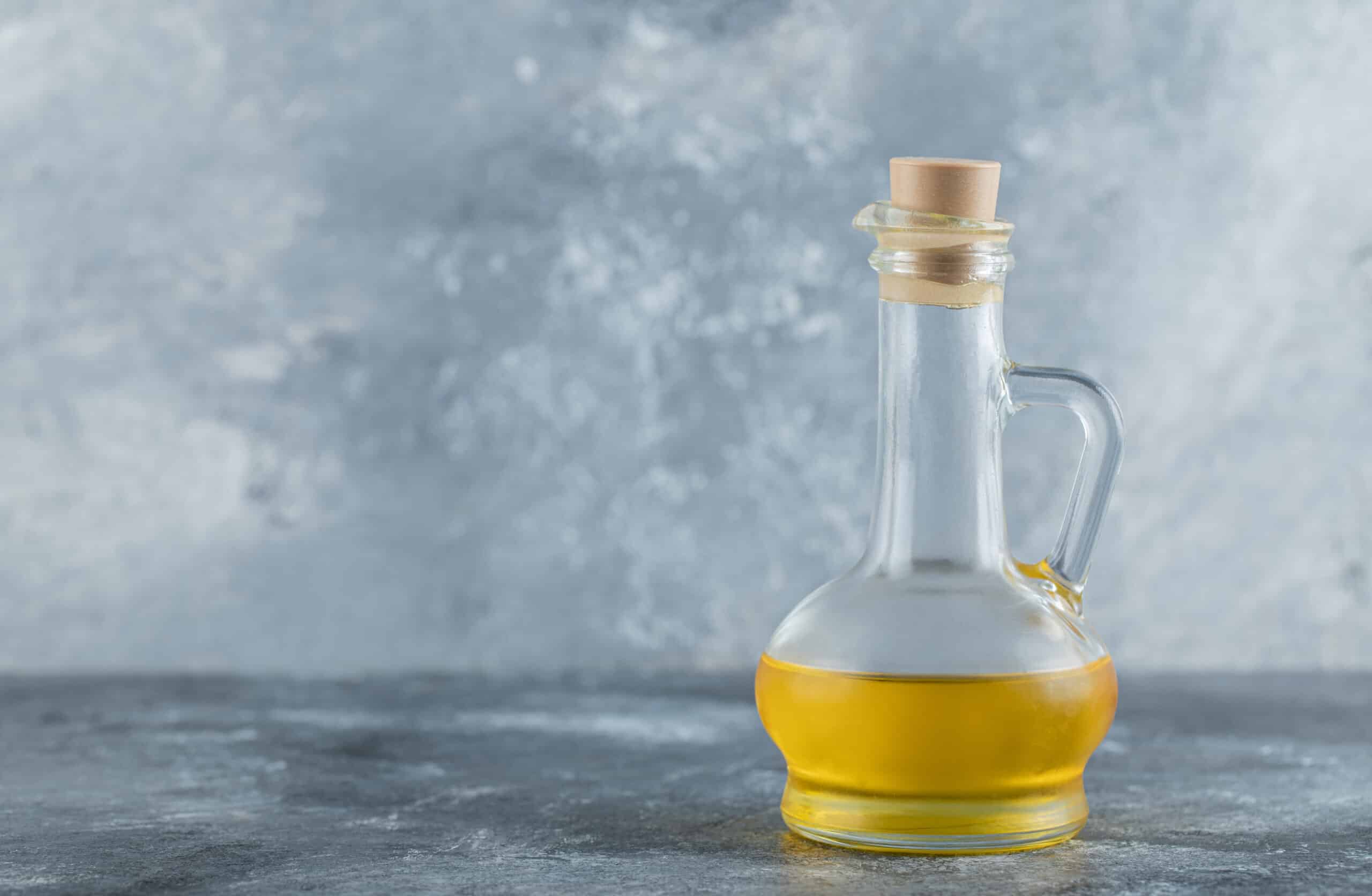How To Make Borage Oil: A Step-by-Step Guide To DIY Borage Oil Extraction

Are you looking to harness the natural benefits of borage for your skin and health routines? You’re on the right path, considering borage oil is a powerhouse of fatty acids known to soothe inflammation and nourish deeply.
Home extraction may seem daunting, but with our clear guidance, making your borage oil can unfold into an enriching DIY project that pampers your body.
Borage oil, derived from the seeds of the lovely Borago officinalis plant, is filled with essential nutrients that can revitalize skin and improve various culinary dishes. This article will walk you through every step to create this herbal elixir in your kitchen — no fancy equipment is required! Let’s dive into creating this medicinal marvel so you can start reaping its soothing rewards.
Ready to begin your journey to a healthier self? Keep reading!
Key Takeaways
- You can make borage oil using seeds or flowers from the borage plant. The seed oil is rich in gamma-linolenic acid for skin health, while flower-infused oil has soothing properties.
- To extract the oil from seeds, use a cold press machine and store the oil in dark bottles. For flower-infused oil, dry the flowers, cover them with a carrier oil in a jar, and let it sit for 3-4 weeks before straining.
- Use homemade borage oil in skin care products to help with dryness and inflammation. It’s also good in cleaning products due to its antimicrobial features and can add nutritional value when used in cooking.
- Keep borage oil fresh by storing it properly in cool, dark places like your fridge, and always label it with the date made.
- Be safe when using borage oils on your skin; do patch tests first to prevent bad reactions.
What is Borage Oil?

Borage Oil comes from the seeds of the borage plant. People call this plant Starflower, too. It has a special oil rich in gamma-linolenic acid (GLA). This makes it stand out for its health benefits.
The GLA in borage oil helps fight swelling and pain in your body, which can be good for your skin and joints.
This oil isn’t just from any part of the plant; it’s pressed out of its tiny seeds. These seeds hold powerful nutrients that make borage oil great for keeping skin moist and healthy-looking.
If you have rough or red skin, this oil might soothe it because of its anti-inflammatory abilities. Many people with arthritis use it to ease their soreness. If you’re worried about losing hair, using borage oil could help keep your locks thick and strong!
How to Extract Borage Oil

To extract borage oil, you can use two main methods: borage seeds or borage flowers. Each technique offers unique benefits and properties, so choosing the one that best suits your needs is important.
Let’s look at each extraction method to help you decide which is right.
Using borage seeds
Borage seed oil is a favorite for healthy skin. It comes from the seeds of the borage plant, packed with beneficial gamma-linolenic acid (GLA).
- Find high-quality borage seeds. Look for Borago officinalis seeds that are ready for oil extraction.
- Clean the seeds thoroughly. Make sure to remove any dirt or debris to get pure oil.
- Use a cold press machine. This method helps preserve the nutrients in the oil without using heat.
- Place cleaned seeds into the cold press. The machine will squeeze out the oil carefully.
- Collect the oil as it comes out. Make sure you have a clean container to catch it.
- Filter the extracted oil. Use cheesecloth or a fine strainer to remove leftover seed particles.
- Store your borage seed oil right away. Keep it in dark glass bottles to protect it from light damage.
Using borage flowers
Borage flowers are not just beautiful but also useful for making infused oil. This oil is great for skin care and has anti-inflammatory properties.
- Pick borage flowers that are in full bloom. Look for the most vibrant blue ones because they are fresh and beneficial.
- Wash the flowers gently. Use cool water to remove any dirt or little bugs on them.
- Dry the flowers completely. You can lay them on a clean towel or paper in a warm, dry place.
- Get a clean glass jar ready. Make sure it has a tight-fitting lid to keep everything sealed in later.
- Fill the jar with dried borage flowers. Don’t pack them too tight; leave some room.
- Pour your choice of carrier oil over the flowers. Great options include olive oil, jojoba oil, or almond oil.
- Make sure the oil covers all the flowers. This helps pull out all their good stuff into the oil.
- Close the jar tightly with its lid. Let it sit in a sunny spot like a windowsill for about three to four weeks.
- Shake the jar lightly every day. It helps mix everything well so you get more from your flowers.
- After waiting, strain the mixture using cheesecloth or a fine mesh strainer. You want to catch all bits of flower left behind.
- Store your freshly made borage flower-infused oil in a new, clean glass bottle or jar.
How to Use Borage Oil
Borage oil can be used in various ways to promote skin health, including in skin care products like lotions and creams and in homemade cleaning products for its antimicrobial properties.
Additionally, it can be used in cooking and recipes to add a nutritional boost to your meals.
In skin care products
Borage oil is popular in many skin care products because it reduces inflammation and hydrates dry skin. It can also help alleviate conditions like eczema and relieve sore joints.
The gamma-linolenic acid (GLA) in borage oil inhibits the production of inflammatory substances when applied topically, making it an effective addition to creams, ointments, and lotions.
Its luxurious feel and effectiveness have made borage seed oil a common and safe choice for expensive face creams. With its anti-inflammatory properties and moisturizing benefits, borage oil has become a staple in the skincare routines of many people looking to improve their overall skin health.
In homemade cleaning products
Borage oil is a great ingredient for homemade cleaning products due to its anti-inflammatory properties. When added to your DIY cleaners, it can help provide gentle yet effective cleaning while offering potential benefits for those with sensitive skin.
Its rich content of gamma-linolenic acid (GLA) makes it suitable for creating natural and non-toxic cleaning solutions that are safe for you and your family.
Using borage oil in homemade cleaning products provides an opportunity to harness its unique properties in a way that promotes a healthier living environment. Whether you’re making surface sprays, floor cleaners, or laundry detergents, incorporating borage oil can elevate the effectiveness of these products while possibly contributing to a safer and more sustainable home ecosystem.
In cooking and recipes
Borage oil adds a unique cucumber flavor to dishes, making it perfect for soups, ravioli, salads, and chimichurri recipes. Its health benefits make it a great choice for those interested in improving their well-being through natural ingredients.
Incorporating borage oil into your cooking enhances the flavor of your dishes and provides a source of essential fatty acids and antioxidants that contribute to overall health.
With its versatility and culinary uses, borage oil is an excellent addition to any health-conscious kitchen.
Tips for Storing and Using Borage Oil
Proper storage methods for borage oil include keeping it in a cool, dark place and ensuring the container is tightly sealed to prevent oxidation. When using borage oil, remember to dilute it before applying it to your skin, and always do a patch test first to check for any allergic reactions or irritation.
For more tips on how to store and use borage oil effectively, continue reading this article!
Proper storage methods
Store your borage oil in a dark glass bottle to shield it from light. It’s best kept in a cool, dark, and dry place – the refrigerator works well. When stored correctly, borage oil usually lasts 6 months to 1 year.
Safety precautions
Before using borage oil, it’s important to take some safety precautions. Perform a patch test on a small area of skin before applying borage oil to your face. Store the oil in a clean, dry, and airtight glass bottle at room temperature to prevent spoilage.
Keep it in a cool, dark place for best results.
Take care when using borage oil, especially if you have sensitive skin or allergies. Always follow these safety tips to enjoy the benefits of borage oil without any adverse effects.
FAQs
1. What is borage oil and what does it help with?
Borage oil comes from a plant called borage, which may help treat skin conditions and fight inflammation. It has linoleic acid and is used in capsules or as an edible oil.
2. Can I make my own borage oil at home?
Yes, you can make your own herbal infused borage oil by soaking the leaves and flowers in a carrier oil like olive or coconut. This lets the good stuff from the plant get into the oil.
3. How do you use borage oil once you have made it?
You can put homemade borage oil on your skin to soothe irritation or rash, or mix it into things like soaps for its emollient qualities that make skin soft. Always check if it’s safe to use on your skin.
4. Are there any bad effects from using borage oil?
Sometimes, taking too much of anything isn’t good — ingesting lots of borage might cause indigestion or a bloated feeling due to pyrrolizidine alkaloids which may be harmful if consumed too often.
5. What makes cold pressed oils different from other oils when making DIY Borage Oil?
Cold pressed means no heat was used to get the juice out of plants; this keeps all the helpful parts unharmed—making cold-pressed oils best for keeping their health benefits intact.
6. If I grow my own herbs, can I add them to my DIY borage tincture?
Sure! People who love herbs grow garden favorites like lavender, calendula, rosehip alongside their vegetables—and then they might toss these into their DIY herbal remedies for added goodness.

